KUALA LUMPUR, Oct 19 — A five-minute walk from the Bandar Puteri LRT station is Bún Việt Restaurant, located amongst a number of auto workshops and sporting a sign that features a bowl of noodles with the flag of Vietnam as a motif.
Walking in on a late Sunday afternoon, it becomes immediately apparent that the place is mostly frequented by the local Vietnamese community, with the occasional Mandarin phrase bobbing up in a sea of conversations in Vietnamese.
The feel is like that of a mom-and-pop joint, right down to the rambunctious kid behind me getting scolded (in Vietnamese) for playing with his rather loud My Little Pony toy.
Adding to this apparent little Vietnam enclave is Saigon New Mart, a Vietnamese grocery store located a few doors down that brings in everything from quail eggs to mắm tôm, a type of Vietnamese shrimp paste, in wholesale and retail quantities.
With a name like Bún Việt, it’s only right to go with dishes that feature the titular noodle.
Bún is Vietnamese for rice vermicelli, and is a fundamental ingredient in dishes like bún bò Huế and bún riêu.
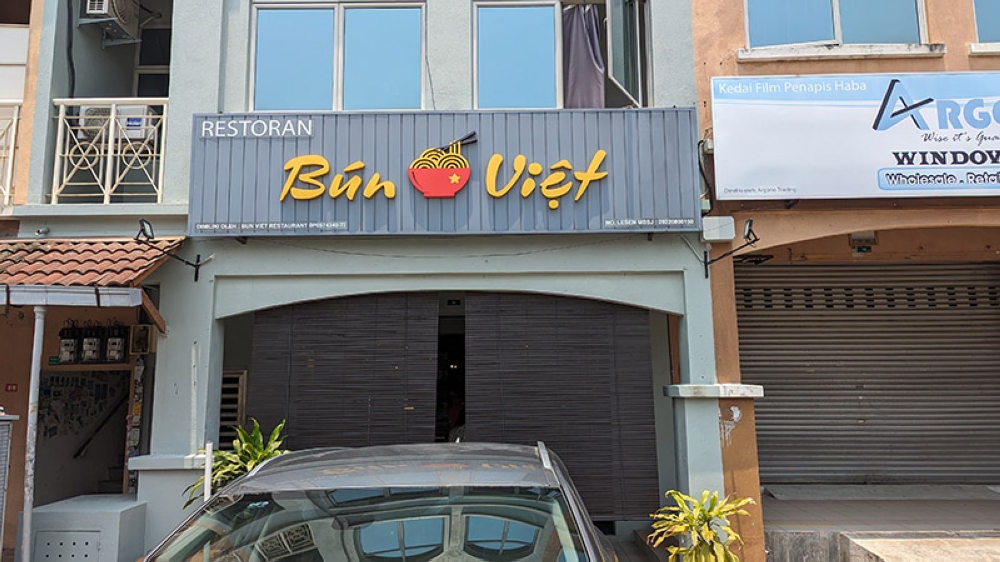
The former originates from the city of Huế in central Vietnam and usually consists of cylindrical rice noodles on the thicker side (compared to bún riêu) and sliced beef (bò) with shedloads of lemongrass.
Here, the bún bò Huế (RM16.90) is remarkably complex: it’s spicy, savoury and fragrant with a distinct citrusy aroma from the lemongrass, which is omnipresent but not overbearing.
It’s a bowl that pulls no punches, and each spoonful is a heavy hitter of flavour.
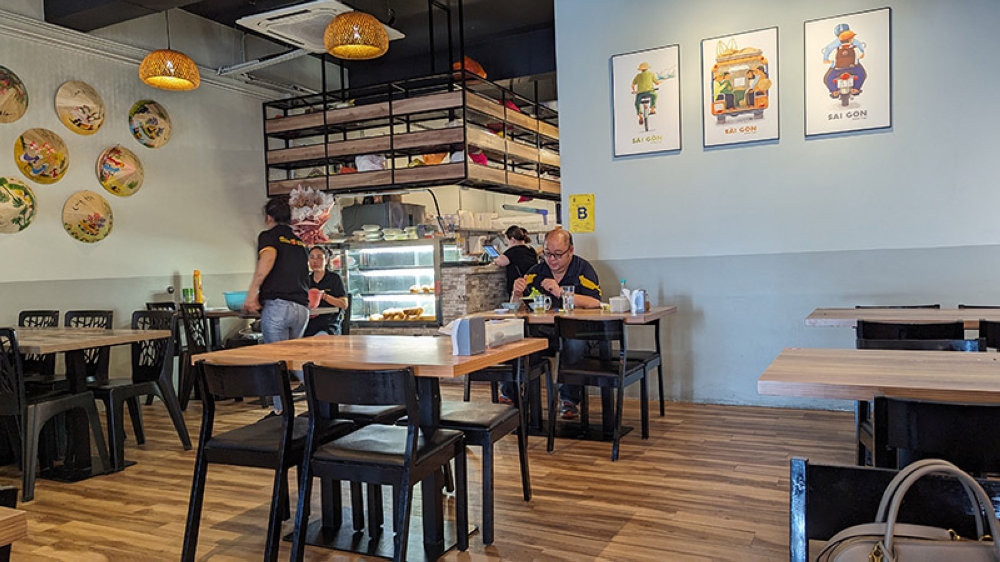
Thin slices of beef and a chunk of chả lụa, a common type of Vietnamese sausage, float in the broth like the meaty morsels that they are, while a medley of fresh herbs like Thai basil, mint and cilantro impart even more brightness.
Best of all, the slippery smooth noodles provide an irresistible slurping experience, even as they slip through your chopsticks, mocking, almost goading you into gulping the whole thing down, dining decorum be damned.
Similarly, bún riêu (RM14.90) here is a bright and zesty affair that’s bursting with fresh herbs and flavour, though at a glance, you wouldn’t expect it to be.
The orangey-red tinge comes courtesy of a tomato-based broth, which carries a sweet, slightly tangy flavour that’s boosted further by the inclusion of crispy shallots on top.
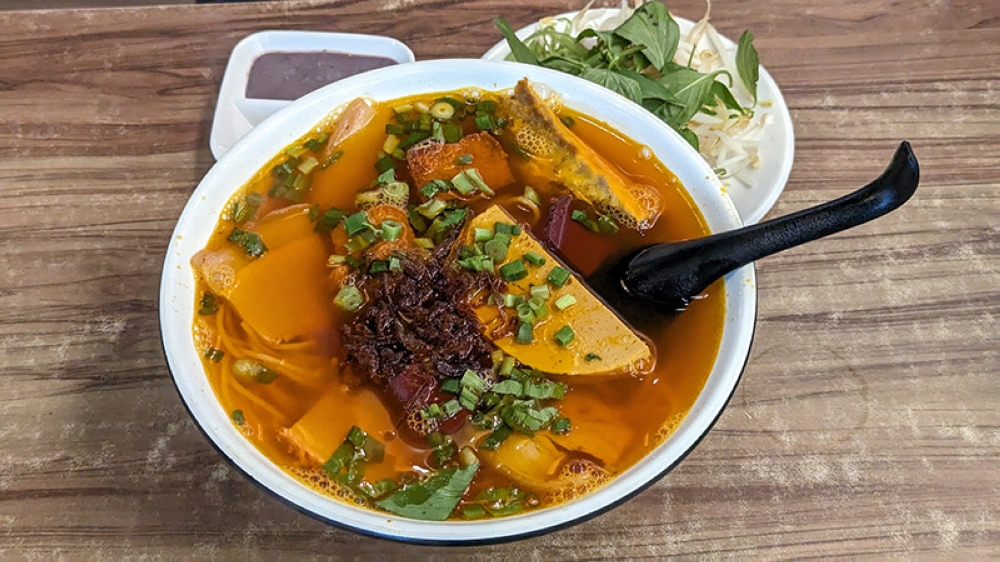
On the side was a bit of mắm tôm, which could be added until your desired level of savouriness was achieved.
Slices of pork belly and a chunk of coagulated pig's blood also provided some savoury elements, though not much, and some crispy fried tofu provided textural contrast to the soft, thin noodles.
Rounding out the trio of noodle dishes was bánh canh cua (RM16.90), which was completely unlike the first two.
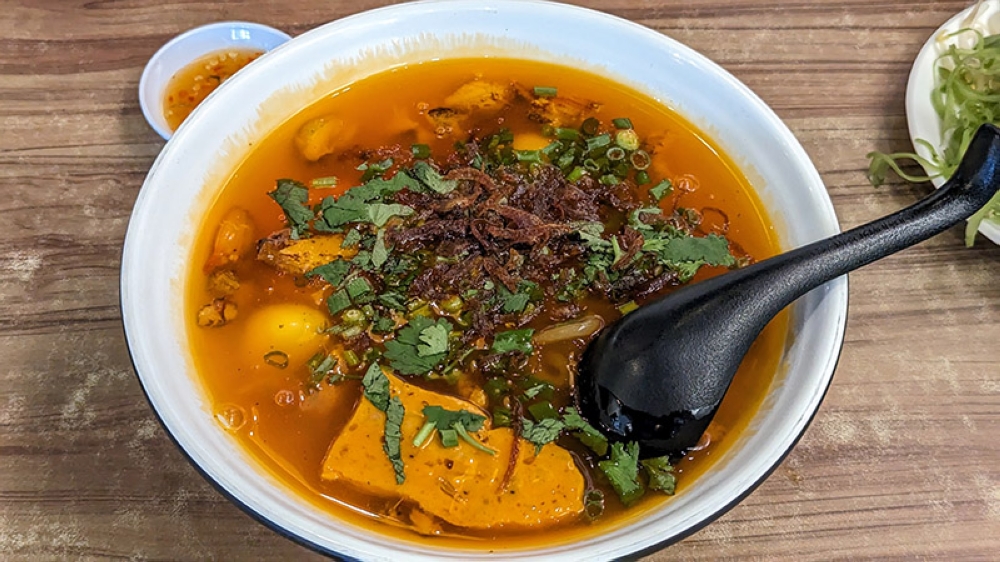
Bánh canh are thick noodles made from tapioca flour or a mixture of rice and tapioca flour, not unlike Chinese lai fun.
While bánh refers to noodles or anything made with flour, canh means "soup” and cua means "crab”.
Characteristics of dishes that feature this variety of noodles are thick and gooey broths, thickened by the chewy, starchy noodles to a syrup-like consistency.
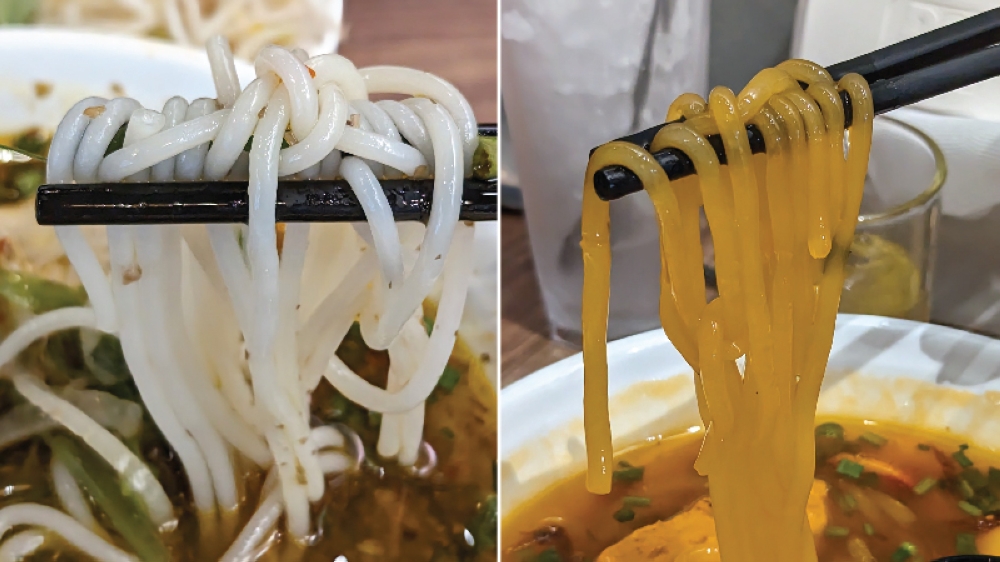
Here, the rich and sweet crustacean flavour of the crab stands out, unlike the more herb-forward flavours of the other two dishes.
Little specks of crab appear throughout, as well as the small but interesting inclusion of boiled quail eggs.
Bánh xèo (RM18) is another highlight, generously sized with plenty to share between two to three, which is typical of the Miền Tây style.
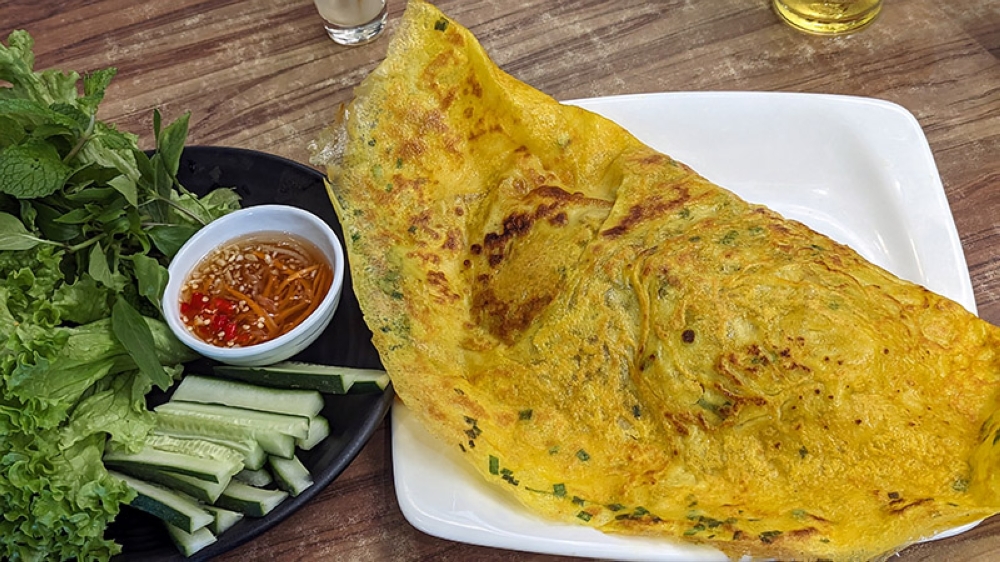
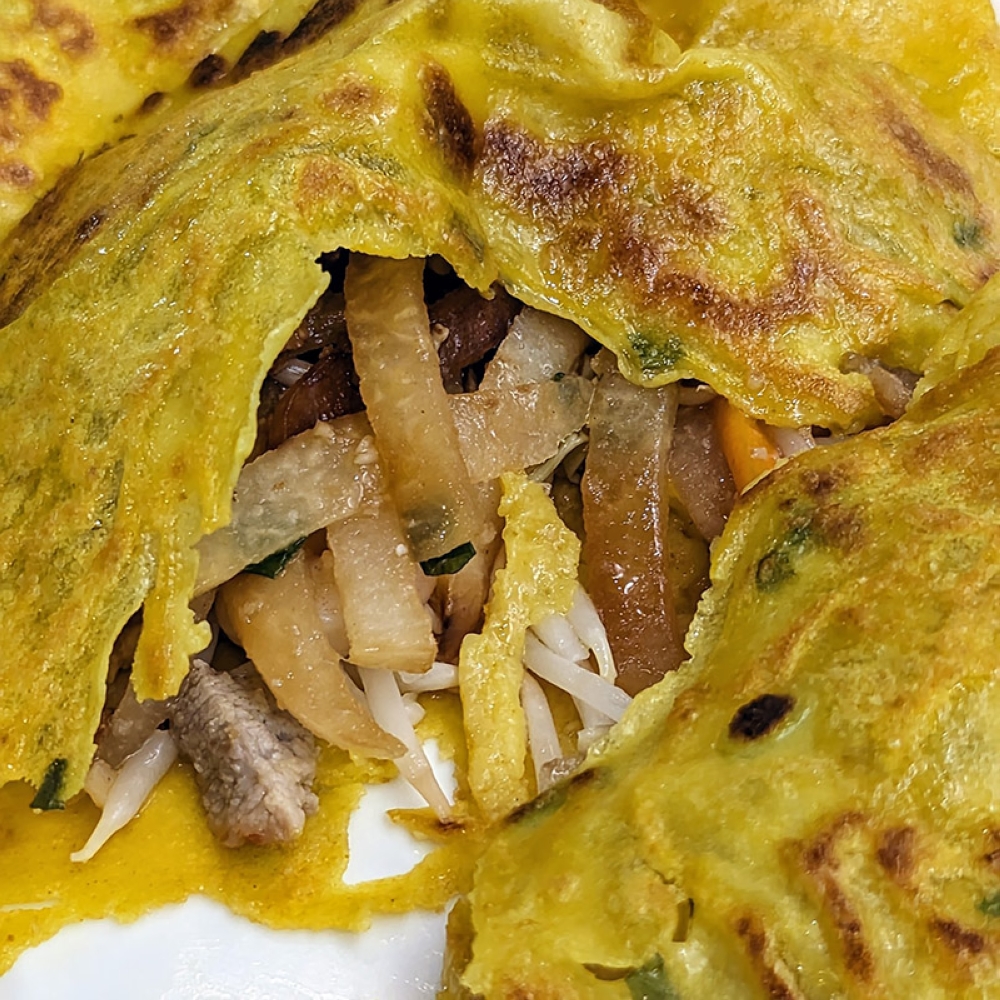
The trademark yellow colour is achieved by the addition of turmeric powder to the simple batter of rice flour and water, which is then fried until crispy, drawing comparisons to a crêpe.
This was stuffed with pork, prawns, onions, carrots and plenty of radish, and went down smoothly with the sweet, sour and savoury dipping sauce.
For dessert, a plate of bánh bò (RM7.90) is a satisfying choice.
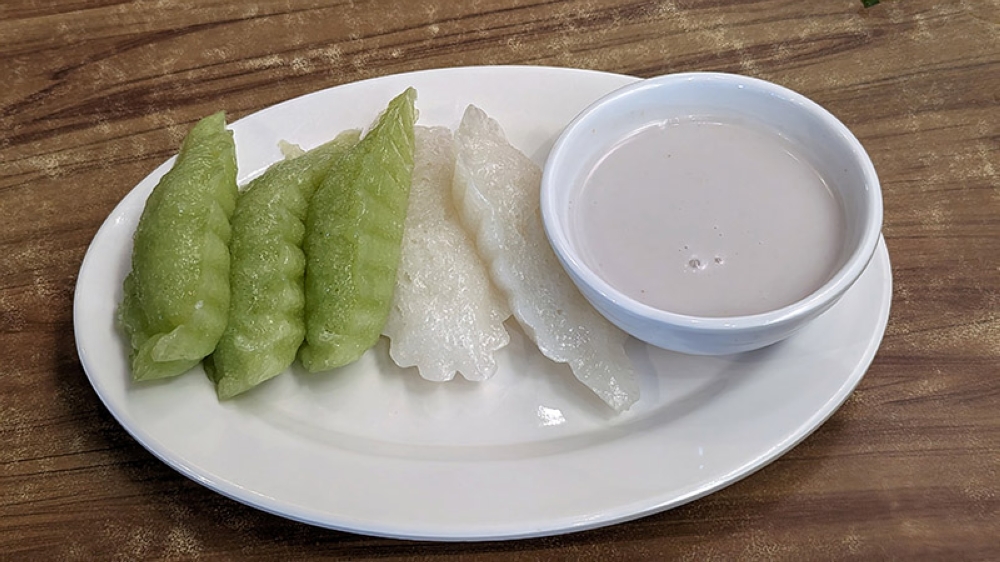
A sweet sponge cake made from rice flour, it bears a striking resemblance to Chinese bai tang gao or steamed white rice cake, save for the inclusion of coconut milk in this version.
The subtle aroma of coconut is noticeable, and when dipped in the creamy coconut milk on the side, it’s soft, chewy and divine.
Bun Viet Restaurant
16, Jalan Puteri 5/5, Bandar Puteri, Puchong
Open daily, 10am-9.30pm
Tel: 018-239 1778
Facebook: https://www.facebook.com/p/Bun-Viet-Restaurant-100084548746739/
* Follow us on Instagram @eatdrinkmm for more food gems






















